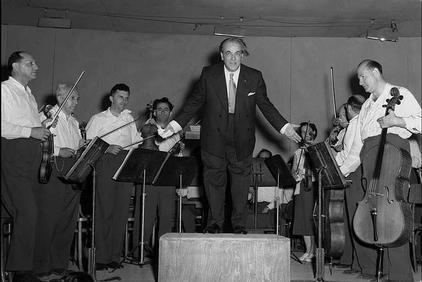 | ||
String Quartet No. 12 is the part of a series of seventeen works in the medium by the Brazilian composer Heitor Villa-Lobos, and was written in 1950. A performance lasts approximately twenty-two minutes.
Contents
History
Villa-Lobos began composing his Twelfth Quartet in New York in 1950, during a stay in Memorial Hospital following kidney surgery, completing the score at the Hotel Weston on 15 September (Gustafson 1991, 8, 10–11). According to the catalogue published by the Museu Villa-Lobos, it was first performed by the Quarteto Haydn in the Auditório do MEC, Rio de Janeiro, on 3 November 1951 (Villa-Lobos, sua obra 1989). According to another authority, the first performance was given that same year by the São Paulo Quartet (Gutiérrez 2006, 3). The score is dedicated to Mindinha (Arminda Neves d'Almeida), the composer's companion for the last 23 years of his life.
Analysis
As in all of Villa-Lobos's string quartets except the first, there are the traditional four movements:
- Allegro
- Andante malinconico
- Allegretto leggiero
- Allegro ben ritmato
Departing from the traditional sonata-allegro form, Villa-Lobos casts the opening movement of this quartet in a simple ABA ternary form. Each section is thirty-two bars in length, subdivided into sixteen- , eight- , and four-bars segments, and this main body of the movement is followed by a sixteen-bar coda. An interesting detail of the manuscript score is that Villa-Lobos uses the Portuguese tempo marking Alegro, instead of the Italian spelling which is his normal habit (Gutiérrez 2006, 4). The middle, B section is marked meno, and is in the rhythm of a modinha (Estrella 1978, 100). The composer's biographer, Eero Tarasti, regards this as a regression to Villa-Lobos's earlier, clumsier style of quartet writing, and finds the texture "considerably more complicated than in previous quartets and the sound lacks transparency" (Tarasti 1995, 316). Juan José Gutiérrez, on the contrary, views the quartet as relatively simple and concise, marking the beginnings of a neoclassical concern with balance and symmetry of structure in the composer's late period (Gutiérrez 2006, 3–4).
Like the opening movement's central section, the second, slow movement has the character of a modinha. Like the first movement, it is also in an ABA ternary form, in this case preceded by a thirty-two-bar introduction (Gutiérrez 2006, 8–9).
The third movement is a scherzo (explicitly marked as such in the manuscript, but not in the printed score) (Gutieerrez 2006, 11). At rehearsal-number five the cello introduces a quotation from Villa-Lobos's 1940 cantata Mandú-Çárárá, played in parallel fifths (Tarasti 1995, 317).
The finale is once again a ternary ABA form, with a twenty-one bar coda (Gutiérrez 2006, 13). The composer described one theme from this movement as being "à la Spanish" (Gustafson 1991, 8).
